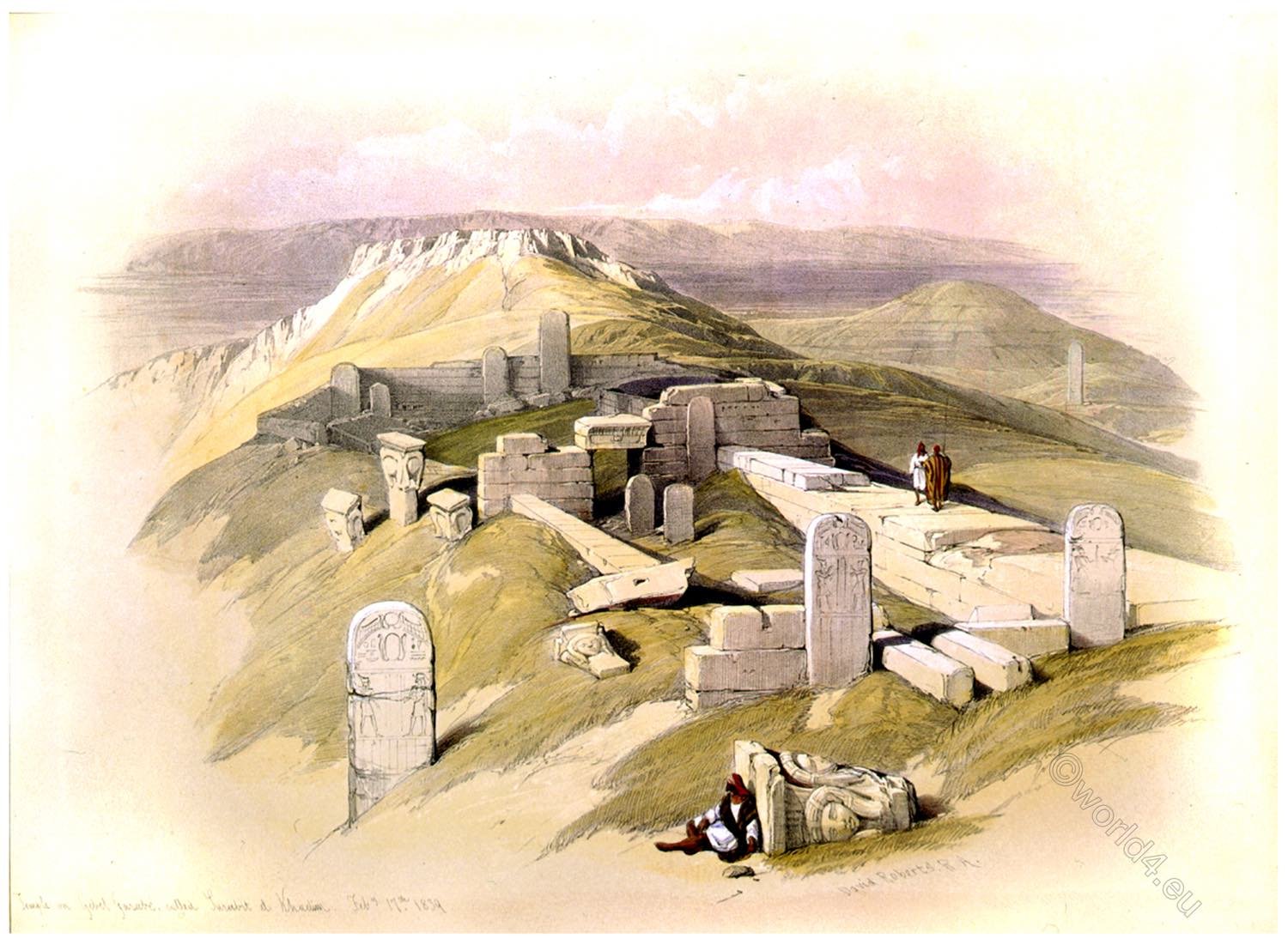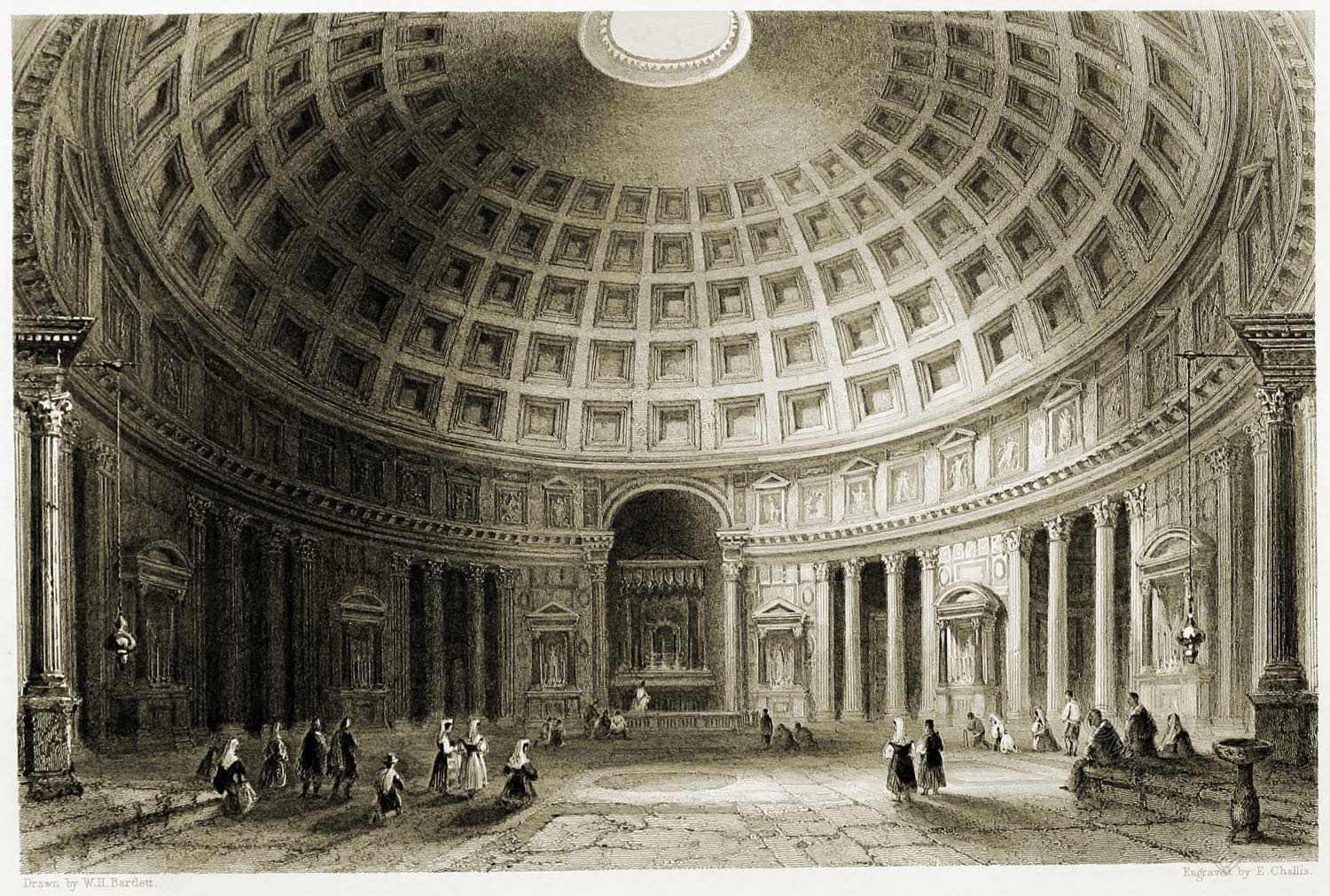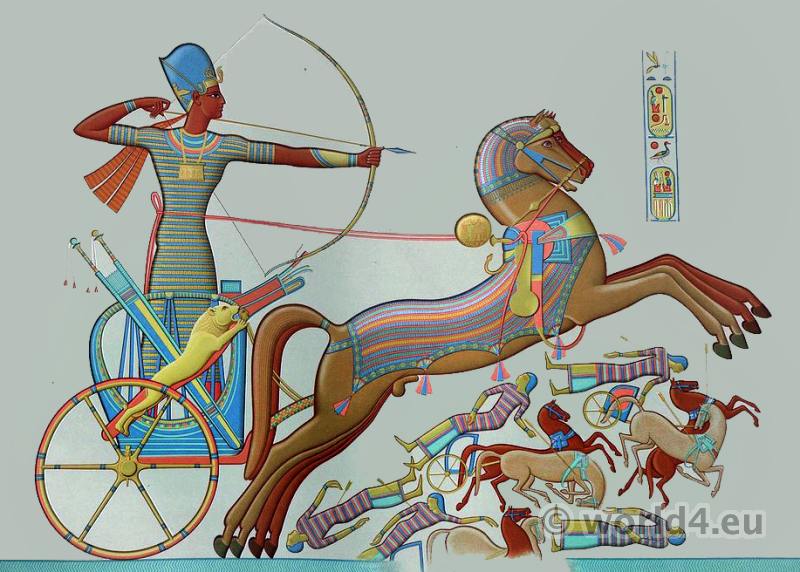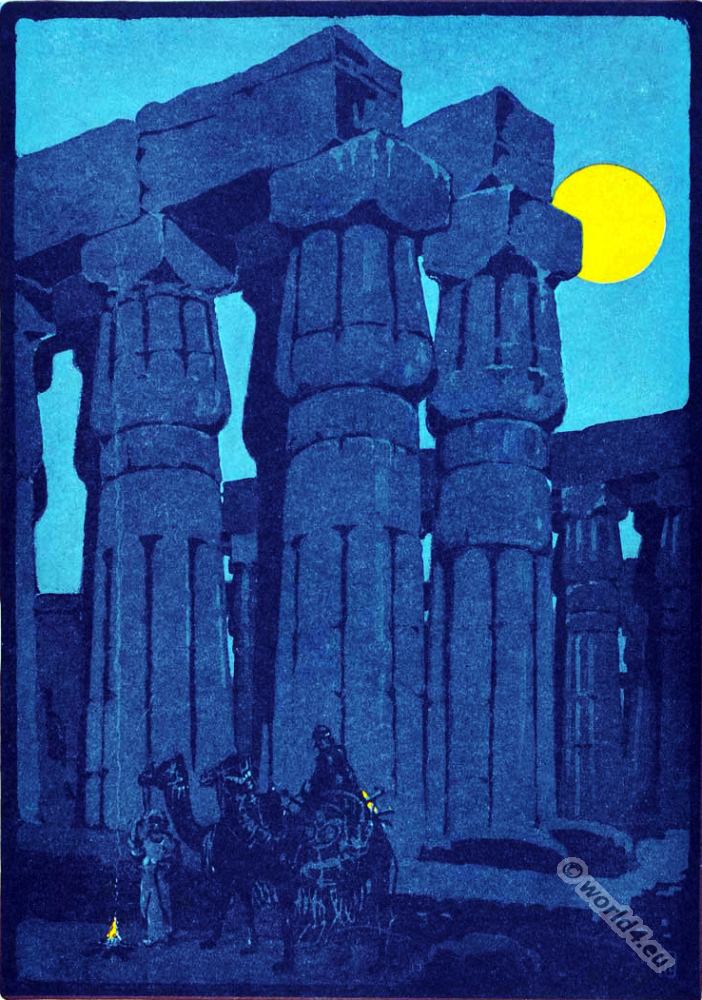
AN ANCIENT EGYPTIAN TEMPLE ON GEBEL GAEABE
by David Roberts.
This title has been given, as the one adopted in the country; although there exists some doubt of the propriety of its application. 1) A wilder spot cannot be imagined. The ruins lie in the Desert, on the summit of a mountain, of no great elevation, but of difficult access.
These extraordinary relics of an unknown period were discovered by Niebuhr in 1761; and though often visited since, the inscriptions have defied every attempt made to apply to them our growing knowledge of the Egyptian hieroglyphic character. No real approach has yet been obtained to the origin, or the purport, of these erections.
One of the later conjectures is, that it was an ancient place of pilgrimage, and that the upright stones covered with inscriptions were votive rather than sepulchral monuments. 2)
The Artist made several exact copies of the inscriptions, but none of them have yet been deciphered. “They lie within a small enclosure on the mountain,160 feet long by 70 feet broad. Within this space are about fifteen upright stones, like tombstones, and several fallen ones, covered with hieroglyphics, and also the remains of a small Temple, whose columns are decorated with the head of Isis for a capital.”
The whole summit is covered with upright and fallen stones, some of them evidently fragments of structures. Several of the stones and the inscriptions are remarkably well preserved; others are worn away and decayed. “What could have been the intent of these temples and memorial stones in the midst of solitude and silence, in this lone and distant land with which they would seem to have no possible connexion? This is a point wrapped in the darkness of time, and which the hand of modern science has not yet unveiled.” 3)
1) Roberts’s Journal. 2) Lord Prudhoe. 3) Bib. Res. i. 116.
Source: The Holy Land, Syria, Idumea, Arabia, Egypt, & Nubia, by David Roberts (British, 1796-1864), George Croly, William Brockedon. London: Lithographed, printed and published by Day & Son, lithographers to the Queen. Cate Street, Lincoln’s Inn Fields, 1855.
Discover more from World4 Costume Culture History
Subscribe to get the latest posts sent to your email.






